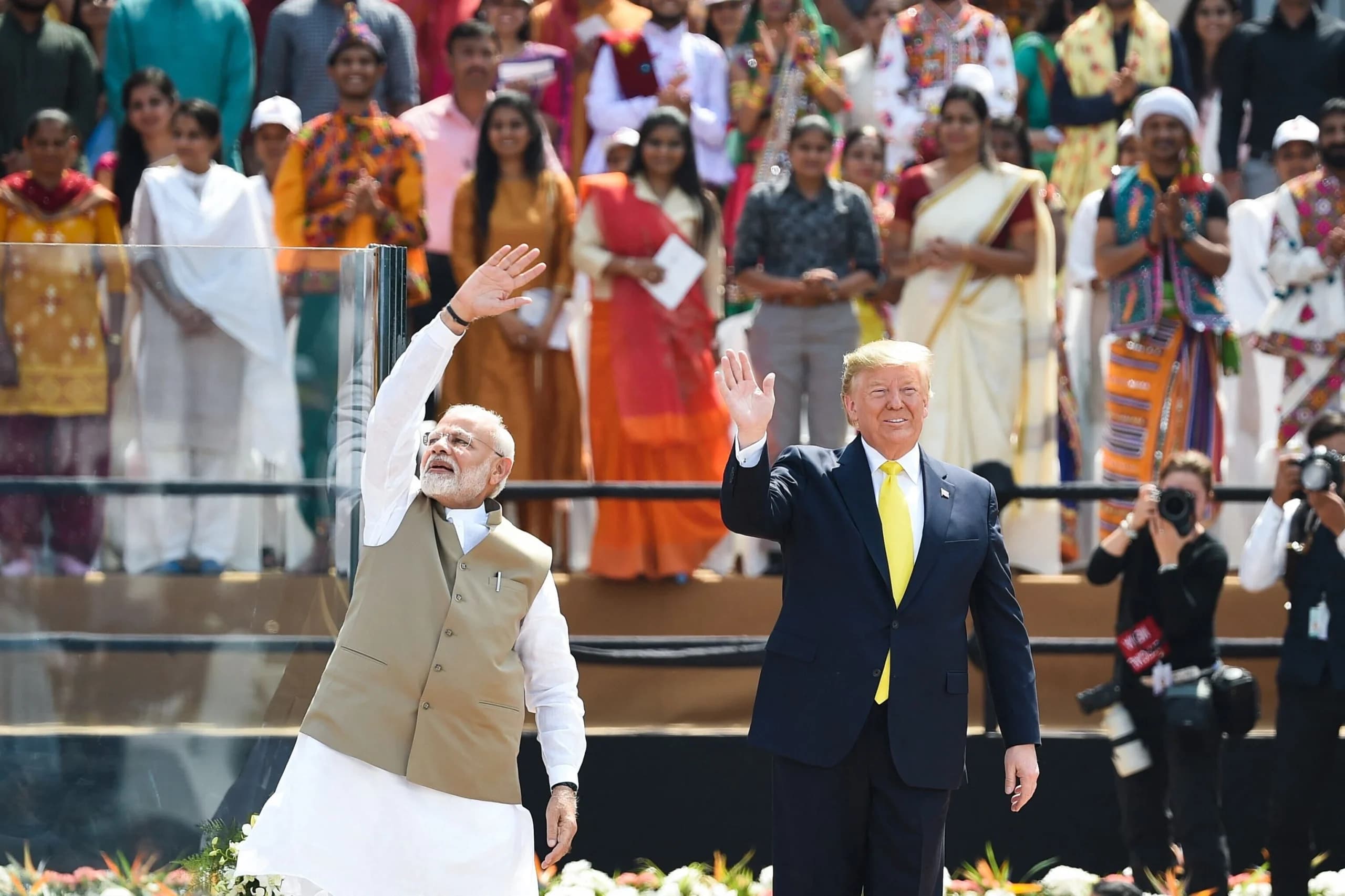India’s foreign policy, long regarded as a carefully calibrated balancing act, is currently facing an existential crisis. The second term of the Donald Trump administration, which was initially welcomed for its potential to strengthen bilateral ties, has instead introduced a series of challenges that have upended India’s strategic calculations. From trade tensions to regional security pressures, India must navigate a rapidly shifting global landscape where its traditional policies are increasingly out of sync with new realities.
In This Article:
Trade Tensions Escalate
One of the most pressing issues is the growing trade imbalance between India and the US. India currently enjoys a $35.3-billion trade surplus with the US, a figure that is likely to draw scrutiny from the Trump administration. Known for his “America First” approach, Trump is expected to push for measures to address this deficit, potentially through tariffs or demands for increased US exports.
His proposed 10-20% tariffs on all imports, with potentially higher rates for countries like India, could lead to retaliatory measures, risking a trade war. With India planning to spend $200 billion on armed forces modernization, the US may also seek to leverage this as an opportunity for big-ticket arms sales. While this could deepen defense cooperation, it also risks escalating trade tensions if negotiations falter.
Immigration Hurdles
Immigration remains a sensitive and contentious issue. The Trump administration’s tightened restrictions on H1B visas pose significant risks for Indian professionals, who constituted over 70% of H1B visa holders in 2023. Additionally, the rising number of illegal Indian immigrants—estimated at nearly 725,000—has become a point of friction. India must address these migration challenges, including cracking down on migration rackets, to maintain a stable relationship with the US. Failure to do so could lead to further strain on bilateral ties, particularly as Trump’s administration prioritizes immigration enforcement.
Energy Dilemmas
Energy policy is another area of divergence. Trump’s focus on fossil fuels, encapsulated in his “drill baby drill” slogan, contrasts sharply with India’s commitment to renewable energy. The US is projected to account for 40% of new LNG export capacity by the end of the decade, and Trump may pressure India to increase its imports of US energy. However, this could conflict with India’s renewable energy goals and its broader climate commitments. India must carefully balance its energy security needs with its long-term sustainability objectives, especially as global energy markets face volatility due to US policies in the Middle East.
Regional Security Pressures
Regionally, the Trump administration’s Indo-Pacific strategy places significant pressure on India to play a more active role in countering China. With India accounting for 9.8% of global arms imports, 13% of which come from the US, the defense relationship is already substantial. However, Trump’s second term is likely to demand even greater alignment with US interests, particularly in containing China, as evidenced by continued Quad engagement. This could strain India’s strategic autonomy and its relationships with other key players like Russia and China, forcing India to reassess its regional priorities. Additionally, Trump’s claim of brokering an India-Pakistan ceasefire, contradicted by India but endorsed by Pakistan, has created diplomatic tensions, further complicating India’s regional strategy.
Middle East Dynamics
The Middle East presents yet another challenge. Trump’s “maximum pressure” campaign on Iran, including recent attacks on Iranian oil fields, has led to oil price spikes that directly impact India’s economy (ORF). India’s traditional policy of neutrality in the Israel-Iran divide is increasingly untenable, as global powers demand clearer alignments. India’s continued oil imports from Iran and its abstention from condemning certain actions have already drawn criticism, highlighting the need for a more decisive stance. While India has economic interests in projects like the India-Middle East-Europe Economic Corridor (IMEEC), it must tread carefully to avoid being drawn into the US-Iran conflict.
India-Pakistan Dynamics
The Trump administration’s involvement in the India-Pakistan conflict has further complicated matters. Trump’s claim of brokering a ceasefire between the two nations, which India contradicted but Pakistan endorsed, has set the stage for a collision course with the US. Prime Minister Modi’s non-response to Trump’s Washington visit invitation following the G-7 meeting in Canada underscores the growing tension. India must now manage its relations with both the US and Pakistan while safeguarding its national security interests, a delicate balancing act that has become increasingly difficult.
Opportunities Amid Challenges
Despite these challenges, there are opportunities for India to strengthen its position. The continued emphasis on the Quad and counterterrorism cooperation, particularly after events like the New Orleans attack, offers avenues for deeper US-India collaboration. Additionally, Trump’s support for green cards for international students, with 350,000 Indian students in the US, could benefit India’s youth. The potential for a US-India trade deal, as suggested by some analysts, could also counter China’s economic influence if both leaders seize the opportunity.
At Crossroads
India’s foreign policy is at a crossroads. The second term of the Trump administration has introduced uncertainties that challenge India’s traditional approaches to trade, immigration, energy, regional security, and Middle East dynamics. While there are opportunities for deeper cooperation, particularly in defense and counterterrorism, the risks of misalignment are significant. India must reassess its strategies, prioritize its national interests, and engage proactively with the US to navigate these uncharted waters. Failure to do so could result in a prolonged existential crisis for India’s foreign policy.
By – Sonali




